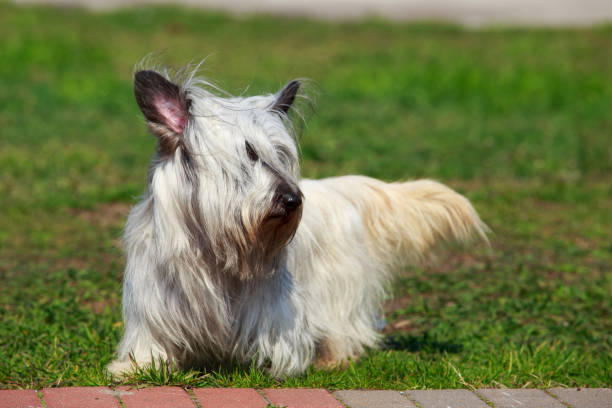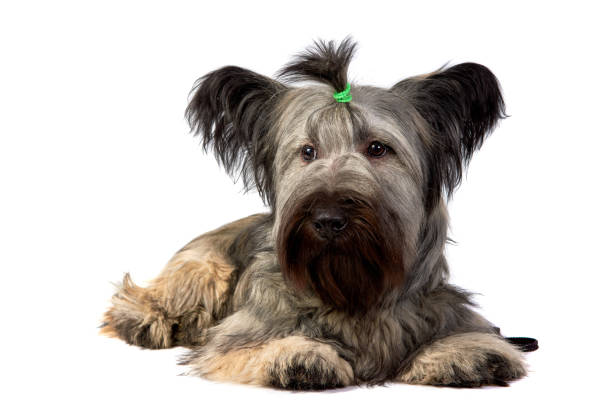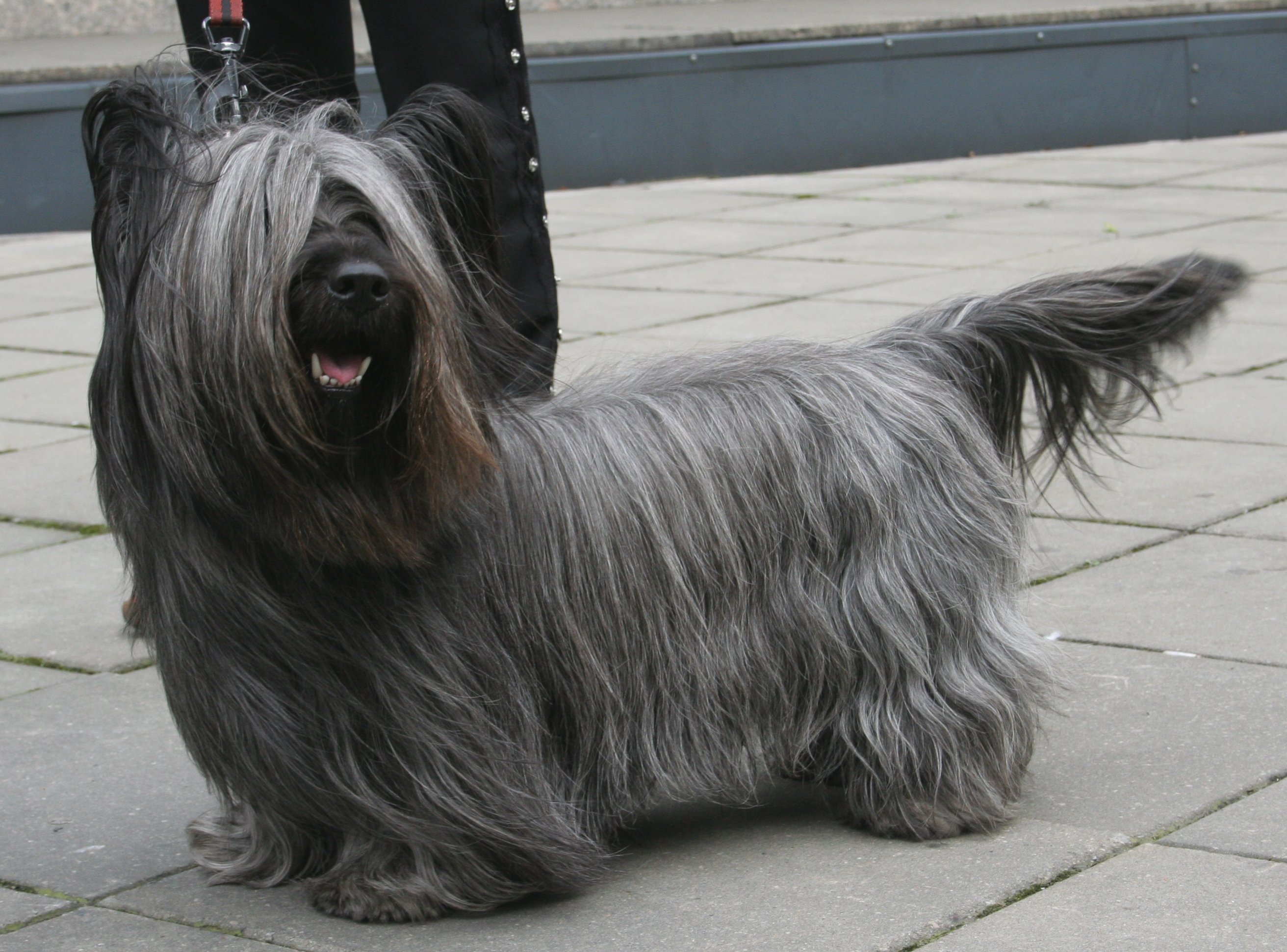Skye Terrier

Breed History:
The Skye Terrier is a historic and elegant breed from Scotland, specifically the Isle of Skye, where it was developed to hunt vermin such as foxes and badgers. Known for its long, flowing coat and short legs, the breed was highly valued by farmers and aristocrats alike for both its working ability and distinctive appearance.
During the 19th century, the Skye Terrier gained popularity in Britain’s royal courts, particularly under Queen Victoria, who owned and admired the breed. Its unique look and dignified presence earned it a place as both a working terrier and a fashionable companion. Today, the Skye Terrier remains a rare but cherished breed, admired for its loyalty, courage, and charming personality.
|
Gender |
Height |
Weight |
|
Male |
25–26 cm |
16–18 kg |
|
Female |
23–24 cm |
12–15 kg |
Size – Small-Medium
Life Expectancy: 12–14 years

Breed Appearance:
The Skye Terrier is a long-bodied, low-to-the-ground breed with a strong and substantial build. Its most defining features are its long, flowing double coat and feathered ears, which may be either prick or drop, depending on the line. The coat, which parts naturally down the back, comes in colours such as cream, grey, black, fawn, or silver.
Despite its short legs, the Skye is agile and sturdy, capable of quick movement and surprising endurance. Its deep chest, strong neck, and solid bone structure are clear indicators of its working background. The breed’s elegant coat and expressive eyes give it an almost regal appearance, which contrasts interestingly with its bold and tenacious spirit.
Breed Type – Companion/Hunter:
The Skye Terrier is an affectionate and devoted breed that bonds strongly with its family. Though it may appear reserved with strangers, it is deeply loyal and protective of its loved ones. Historically, a hunter of burrowing animals, it retains a strong prey drive and a determined personality.
While the Skye makes an excellent companion dog, its terrier instincts mean it is best suited for homes that can offer structure, attention, and gentle but firm leadership. It thrives on close interaction with its humans and may not do well if left alone for long periods.

Training:
The Skye Terrier is intelligent but also independent, a common trait among terriers. While it can learn quickly, it often prefers to make its own decisions and may resist repetitive or harsh training methods. It responds best to positive reinforcement, including treats and praise, delivered with consistency and patience.
Early socialisation is essential to help prevent timidity or overprotectiveness. Introducing the Skye to various people, pets, and environments during puppyhood helps it grow into a confident and balanced adult. With the right approach, Skye becomes a responsive and loyal companion eager to please its trusted owner.
Health & Care:
The Skye Terrier is generally a healthy breed, but it can be prone to a few specific issues, including intervertebral disc disease (due to its long back), luxating patellas, and autoimmune disorders. Responsible breeding and proper care can greatly reduce the risk of these conditions.
Because of its short stature and long spine, jumping on and off furniture or climbing stairs should be minimised, especially when the dog is young. Regular veterinary checkups, a balanced diet, and maintaining a healthy weight are vital for long-term well-being. Overall, the Skye is a robust and resilient breed when properly cared for.

Living Conditions:
The Skye Terrier adapts well to various living environments, including apartments, as long as its daily exercise and mental stimulation needs are met. It is moderately active indoors and enjoys lounging beside its owner, but it still requires daily walks and opportunities to explore safely.
Fenced yards are ideal, as the Skye retains strong digging and chasing instincts. While it does not require large open spaces, the breed does thrive in homes where it receives regular companionship and attention. It is not ideal for busy households where the dog would be left alone frequently.
Exercise:
The Skye Terrier has moderate exercise needs. Daily walks, play sessions, and some off-leash time in a secure area are enough to keep it fit and happy. It enjoys interactive games and short training exercises that provide both mental and physical stimulation.
Despite its calm indoor demeanour, the Skye is surprisingly agile and alert when outdoors. While it does not need excessive exercise, regular activity is essential to maintain a healthy weight and prevent boredom-related behaviours. It should always be kept on a leash in open areas due to its strong prey drive.
Grooming:
The Skye Terrier's long, flowing coat requires regular grooming to prevent matting and maintain its elegant appearance. Brushing several times a week with a pin brush and comb helps remove tangles, particularly behind the ears, under the legs, and along the chest.
Bathing is recommended once every few weeks or when the dog becomes dirty. The coat does not shed excessively but it can trap debris, so cleanliness is key. Routine care should also include trimming nails, cleaning ears, and brushing teeth. Prick-eared varieties may require special attention to prevent buildup around the ears.

Advantages:
-
Loyal, affectionate, and forms strong bonds with family
-
Quiet and calm indoors, well-suited for apartments or smaller homes
-
Distinctive and elegant appearance with a rich history
-
Intelligent and capable of learning with consistent, gentle training
-
Its protective nature makes it a reliable watchdog
-
Moderate exercise needs, making it easy to accommodate in daily routines
Disadvantages:
-
Requires frequent grooming to maintain its long coat and prevent tangles
-
Can be wary of strangers and may take time to warm up
-
Prone to certain health issues related to its long back and short legs
-
Independent nature may make training a challenge for inexperienced owners
-
Strong prey drive makes off-leash activity risky without proper recall
-
May develop separation anxiety if left alone for extended periods

